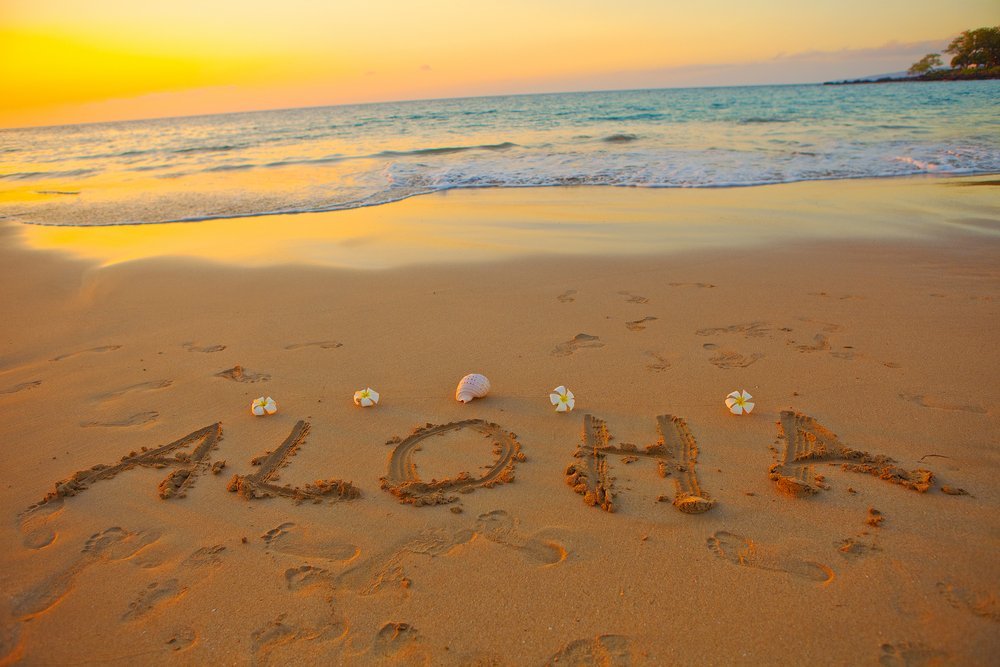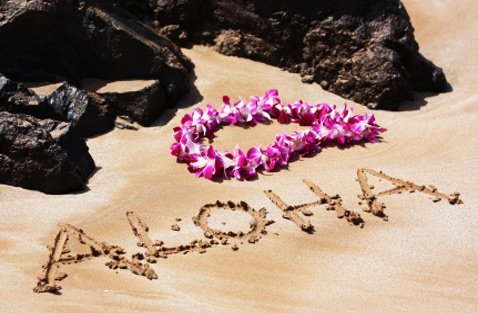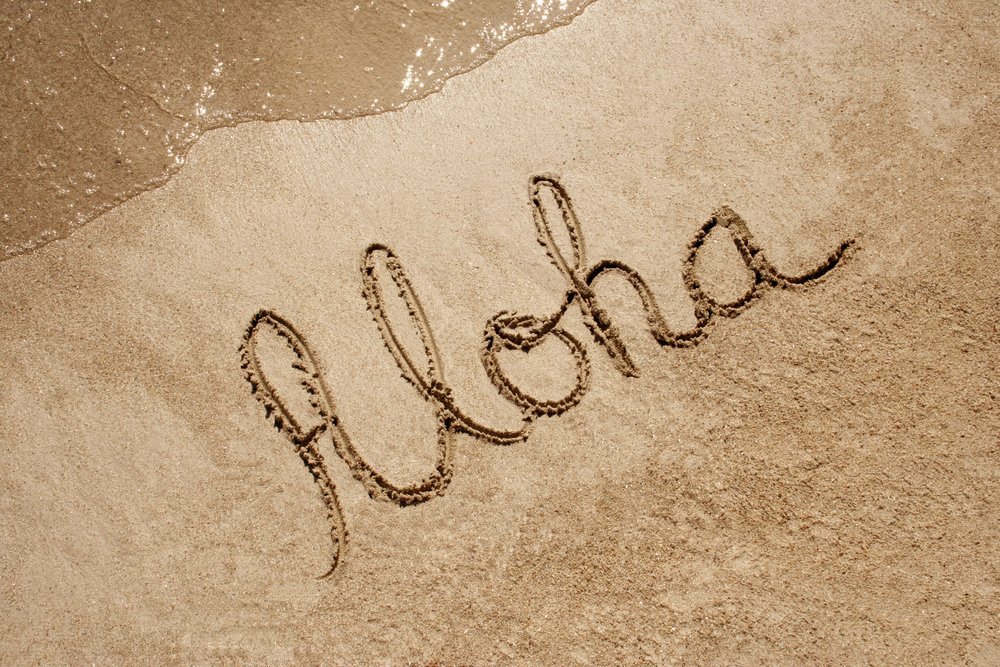The Meaning of Aloha



What Does Aloha Mean?
Aloha is the most Hawaiian word. In the Hawaiian language, it can mean hello or goodbye. It also means love and affection. The word aloha is used in a combination with other words, such as aloha kakahiaka, which means good morning; aloha auinala used as a greeting that means good afternoon; and aloha ahiahi is how you can wish good evening in Hawaiian. Because of aloha's unique meaning and popularity, Hawaii is called the Aloha State.
Aloha is a Hawaiian symbol. Its meaning goes beyond any definition you can find about it in the dictionaries. In Hawaii, you hear aloha all the time and you are treated with aloha everywhere.
The Spirit of Aloha
The literal meaning of aloha is "the presence of breath" or "the breath of life." It comes from "Alo," meaning presence, front and face, and "ha," meaning breath. Aloha is a way of living and treating each other with love and respect. Its deep meaning starts by teaching ourselves to love our own beings first and afterwards to spread the love to others.
According to the old kahunas (priests), being able to live the Spirit of Aloha was a way of reaching self-perfection and realization for our own body and soul. Aloha is sending and receiving a positive energy. Aloha is living in harmony. When you live the Spirit of Aloha, you create positive feelings and thoughts, which are never gone. They exist in space, multiply and spread over to others.
Inspired by the philosophy and the wisdom of the Spirit of Aloha, nowadays many institutions and businesses in Hawaii carry its name: Aloha Tower, Aloha Stadium and Aloha Airlines. Many Hawaiian singers write and perform songs about aloha as well.
The Spirit of Aloha as Law
Aloha Spirit is considered a state "law." Although the word law sounds too strong and strict, Aloha Spirit is not such a type of law that will get you in trouble if you break it. Its main purpose is to serve as a reminder to government officials while they perform their duties to treat people with deep care and respect, just like their ancestors did. Aloha Spirit is more a lesson than a law. By learning and applying this lesson to real life, government officials can contribute to a better world, a world filled with aloha.
Definition of Aloha Spirit State Law
[§5-7.5] "Aloha Spirit." (a) "Aloha Spirit" is the coordination of mind and heart within each person. It brings each person to the self. Each person must think and emote good feelings to others. In the contemplation and presence of the life force, "Aloha," the following unuhi laula loa may be used:
"Akahai," meaning kindness, to be expressed with tenderness;
"Lokahi," meaning unity,to be expressed with harmony;
"Oluolu," meaning agreeable,to be expressed with pleasantness;
"Haahaa," meaning humility, to be expressed with modesty;
"Ahonui," meaning patience, to be expressed with perseverance.
These are traits of character that express the charm, warmth and sincerity of Hawaii's people. It was the working philosophy of Native Hawaiians and was presented as a gift to the people of Hawaii.
"Aloha" is more than a word of greeting or farewell or a salutation.
"Aloha" means mutual regard and affection and extends warmth in caring with no obligation in return.
"Aloha" is the essence of relationships in which each person is important to every other person for collective existence.
"Aloha" means to hear what is not said, to see what cannot be seen and to know the unknowable.
(b) In exercising their power on behalf of the people and in fulfillment of their responsibilities, obligations and service to the people, the legislature, governor, lieutenant governor, executive officers of each department, the chief justice, associate justices, and judges of the appellate, circuit, and district courts may contemplate and reside with the life force and give consideration to the "Aloha Spirit." [L 1986, c 202, §1]
Aloha Friday
Many companies allow their employees to "dress down" on the last day of the workweek - on Aloha Friday. This is when aloha attire may be worn. But it hasn't always been like that. This custom has an interesting history, which is closely tied to Hawaii's clothing industry.
Until the 1940s, much of the locally produced designs were sold to tourists. Employees at large Hawaiian companies were required to wear formal clothes - suits and ties for men and business dresses, skirts and blouses for women. In 1947, Aloha Week was established and people realized that Hawaii's economy would benefit if Hawaii's residents were to wear more Hawaii-made clothing.
So each Friday, the City and County of Honolulu allowed men to wear sports shirts (but not all too colorful ones) while on the job. By the 1960s, the fashion barrier weakened even more. The Bank of Hawaii became the first corporation that allowed aloha attire on Fridays. Today, it is rare to find a business that does not follow the practice of Aloha Friday.
Aloha Shirt
The Spirit of Aloha has given its name to the famous and colorful Hawaiian shirt, known as the aloha shirt. It is adorned in an endless variety of designs and patterns and is tinted in bright colors.
Hawaii produces two types of shirts - aloha shirts, manufactured for locals, and shirts manufactured for tourists and for export to the mainland and other parts of the world. The difference between both types of shirts is that the once manufactured for locals are designed in floral or generic Polynesian motifs, while the shirts manufactured for tourists and for export are much more colorful and can have some of the following motifs: sunny day in Hawaii, shirts adorned with palm trees, tropical cocktails, leis, beaches, blue ocean, flowers, etc.
Another difference between both types of aloha shirts is that tourists wear the shirt as a casual and informal shirt, while the shirts that locals tend to wear are considered as official wear in business organizations and government.
"Aloha to learn what is not said, to see what cannot be seen & to know the unknowable."
Queen Lili'uokalani










